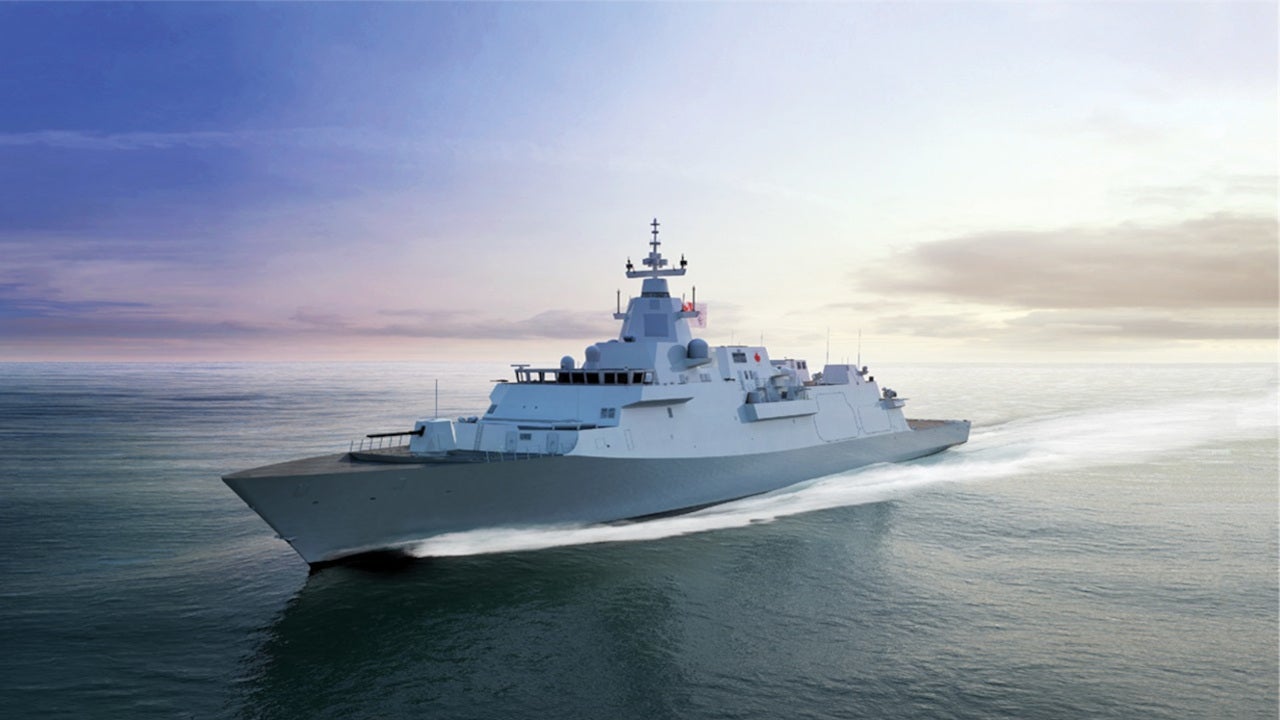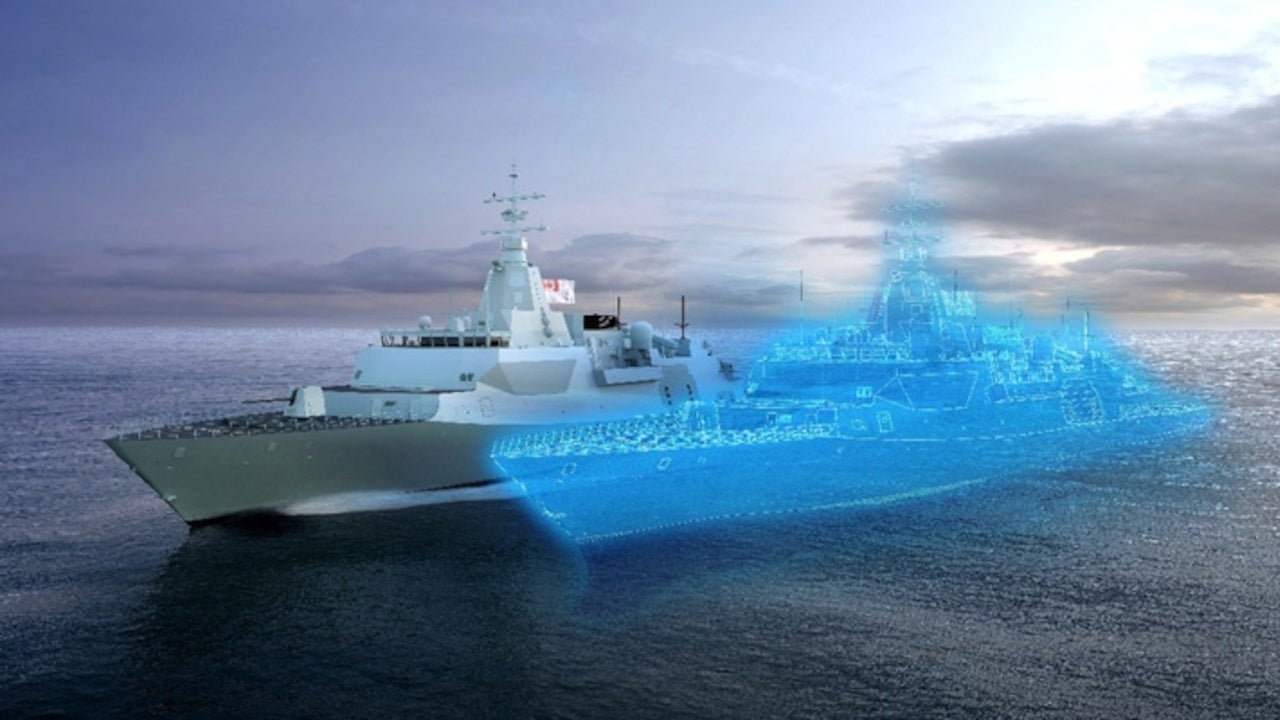The Canadian Surface Combatant (CSC) project is the Royal Canadian Navy’s acquisition programme to build 15 CSC multi-role ships which will replace both the retired Iroquois-class destroyers and the Halifax-class frigates.
The project is estimated to cost between $56bn and $60bn and the new warships are being built by Irving Shipbuilding at its Halifax Shipyard.
The CSC has the capacity to conduct air, surface, sub-surface and information warfare missions simultaneously on both open ocean and highly complex coastal environments.
The multi-mission combatant can be deployed in a range of missions such as delivering decisive combat power and supporting the Canadian Armed Forces. It can also conduct counter-piracy, counter-terrorism, interdiction and embargo missions for medium intensity operations.
Canadian Surface Combatant development details
The Canadian Surface Combatant project is part of Canada’s National Shipbuilding Strategy and is the biggest shipbuilding activity in the country since the World War II.
Irving Shipbuilding was appointed as the prime contractor for the CSC project definition and implementation phases in January 2015.
The Government of Canada and Irving Shipbuilding awarded a sub-contract to Lockheed Martin Canada for the design of CSC fleet in October 2018.
In February 2019, the design of BAE Systems’ Type 26 Global Combat Ship, the most advanced and modern anti-submarine warship, was selected for the CSC vessel.
BAE Systems opened the first visualisation suite for the CSC vessel in Ottawa, US, in November 2020. The visualisation technology will create a virtual prototype which helps in better understanding of the vessel and offers detailed view of the ship’s design from all angles.
Rolls-Royce Centre of Excellence facility based in Peterborough, Ontario was expanded for supporting the CSC acquisition project.
Design and features of the Royal Canadian Navy’s CSC ships
The CSC will have a length of 151.4m, beam of 20.75m and a navigational draught of 8m. With a displacement of 7,800t, the warship will accommodate up to 204 crew members.
The warship can carry a CH-148 Cyclone helicopter and provide facilities for embarking remotely piloted systems.
It will also feature reconfigurable mission and boat bays including a 9m rescue boat, two 9-12m multi-role boats, Rolls Royce’ mission bay handling system, and modular mission support capacity.
The Canadian Surface Combatant will also house a medical facility and dedicated gym/fitness facilities.
Weapons
The weapons suite for the CSC will include 127mm main gun, two stabilised rapid fire 30mm naval gun systems, LMC MK 41 missile vertical launch system, 32-cell MK54 lightweight torpedoes, twin launch tubes, and MBDA Sea Ceptor close-in air defence system.
The warships can be armed with a wide range of missiles including Raytheon Standard Missile 2, Raytheon Evolved Sea Sparrow point defence missile, and Kongsberg Naval Strike Missile.
Command and control of Canadian Surface Combatant
The warship will be installed with various command and control systems including Lockheed Martin Canada’s (LMC) CMS 330 combat management system with Aegis combat system, USN cooperative engagement capability, integrated cyber defence system, OSI integrated bridge and navigation system, and L3 Harris’ internal and external communication suite.
Sensors and countermeasures
The LMC SPY-7 active electronically scanned array (AESA) radar will be installed for continuous surveillance and protection against modern threats.
The combat ship will also be fitted with MDA’s solid state AESA target illuminator, X- and S-band navigation radars, electro-optical and infrared systems, laser warning and countermeasures system, radio frequency and electronic jammers, and electronic decoy system.
Underwater warfare capabilities of CSC ships
The Royal Canadian Navy’s future combat ships will be equipped with an integrated underwater warfare system, which includes Ultra Electronics’ S2150 hull-mounted sonar, towed low frequency active & passive sonar, and SEA SENTOR S21700 towed torpedo countermeasures.
General Dynamics’ sonobuoy processing system and expendable acoustic countermeasures will also be installed aboard the vessels.
Propulsion and performance of Canadian Surface Combatant
The CSC combat ship will be powered by a combined diesel-electric or gas propulsion system (CODLOG) integrating two GE electric motors, a Rolls Royce MT 30 gas turbine, and four Rolls Royce MTU diesel generators.
The vessel will be able to sail at a maximum speed of 27k and achieve a maximum cruising range of 7,000nm.
Contractors involved
Lockheed Martin Canada is collaborating with BAE Systems, CAE, L3Harris, MDA and Ultra Electronics for the design of the global combat ship.
MDA signed a $2.99m contract with Lockheed Martin Canada for the initial phase of design work of the Canadian Surface Combatant ships in April 2019. Lockheed Martin will also be responsible to provide the electronic warfare suite system.
Ultra Electronics Maritime Systems will lead the integration of sensors with sonobuoys and other capabilities for wide-area underwater battlespace surveillance.





